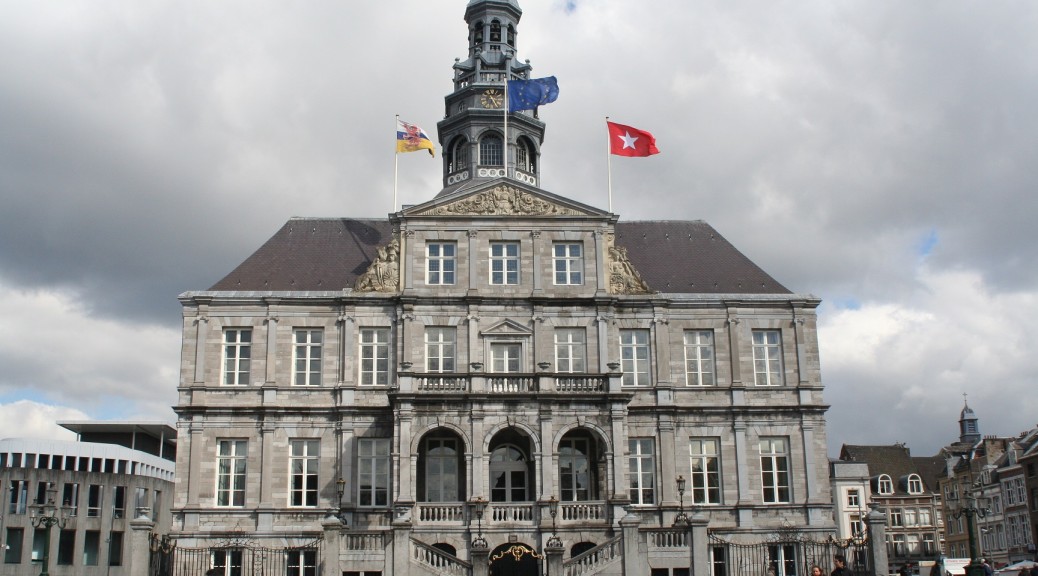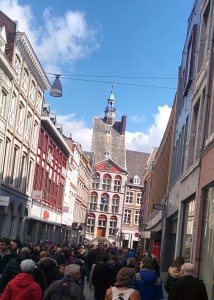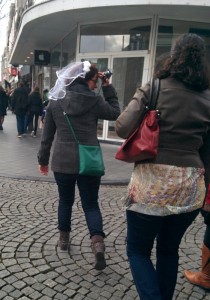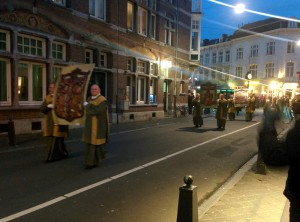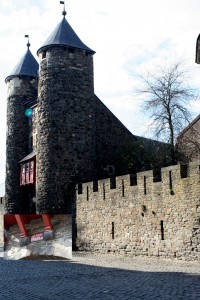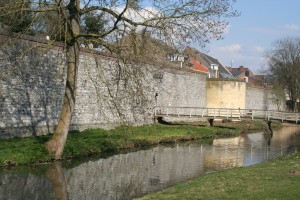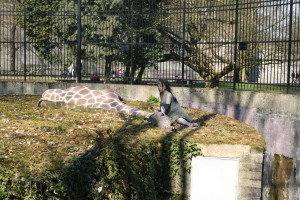For those of you who are familiar with Chicago, I would say Maastricht is “The Magnificent Mile meets old Europe”.
The main road leads from the train station through “new” town, across the river, and into “old” town. Every building top says “old European”, but the ground floor of each is a modern, hip, trendy store, cafe, or restaurant.
With all of the shopping, we see the opposite of what we see in Amsterdam. There, stag party after stag party. In Maastricht, it’s not uncommon to see bride-to-be’s strolling around with their girlfriends.
And of course, being Europe, there is a spattering of churches across town. They say that Maastricht is actually very Catholic. I guess that explains the religious procession the night we arrived (Good Friday).
Come to find out, Maastricht is home to the first bishop of the Netherlands, Saint Servatius. He’s buried at the Basilica named after him (Sint Servaas), where he “reigned” until his death in 389. I didn’t take any pictures; I’m worn out of European churches.
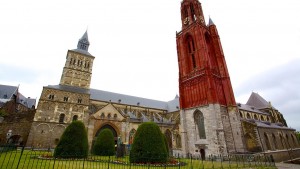
(Not my picture. Found online. The red tower is from Sint Janskerk next door, which was unattractive inside. There are tower tours, to get a bird’s-eye-view of Maastricht. We did not take that tour.)
There’s actually quite a contrast of old and new. The further south you go, you see a modern bridge, modern buildings… and eventually a state-of-the-art health center. My heart, though, prefers the antique.
Enter the medieval walls. They don’t surround the city any more, but they are still there (with certain sections restored). There are actually different layers, some walls older than others. The oldest we saw had the “Helpoort” (the Hell Gate).
The “newer” walls would have wrapped the older walls.
Now, they play host to a park with paths, a “moat”, and a really weird sculpture. Since there are animals nearby (owned by the university), the park has a “zoo” feel to it, but it’s not a zoo. Then you turn a corner and see a cage surrounded by people looking at the animal inside. We get closer and it looks like a dead giraffe.
There are other “animals” in the enclosure. Not sure what the message is by the artist.
There are also caves nearby that can be explored. “Through a labyrinth of corridors, a professional guide takes you underground to see the names and drawings of people who worked here every day a few hundred years ago. These so-called ‘block breakers’ were manual labourers cutting out blocks of marl. The marl blocks were used to build houses, churches and castles – and marl is still used in construction today.” We missed the tour due to an unexpected health issue.
All-in-all, it’s a fine distraction for a long weekend. If you want to shop, there’s something for everyone. There’s also fine dining (if you make reservations far enough in advance) and hip cafes. But unless you want to look at more churches, the “history” aspect has been overshadowed by commercialism.
